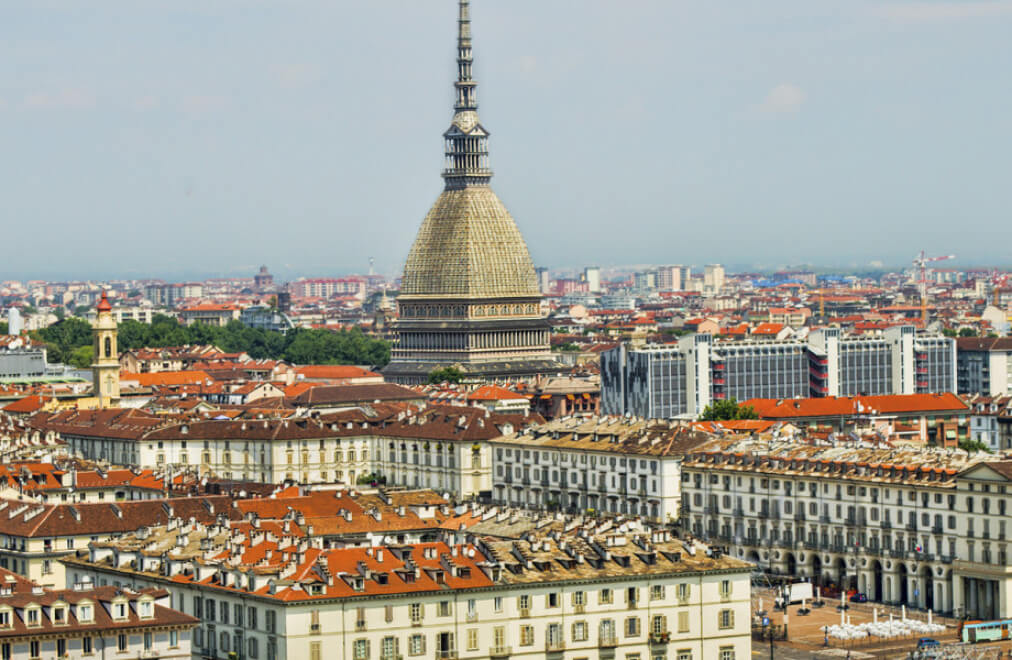
Assistance
Click to start searching
the symbol of Turin

It's difficult to imagine a visit to Turin that isn't in some way defined by the magnificent Mole Antonelliana. The building is an architectural symbol of the city and its towering dome dominates the skyline. It can be seen from almost any part of the city and it is even pictured on the reverse of the Italian 2 cent euro coin. This majestic monument was the inspiration for the official emblem of the 2006 Winter Olympics and also lends its name to the Derby della Mole, a clash between Torino and Juventus that is one of Italy's oldest and most important football fixtures.
The Mole, as it's affectionately referred to, was designed by Alessandro Antonelli, an architect from Novara. Work began in 1863 when Torino was the capital of the new Italian state - a position it relinquished the following year. Originally intended to be a synagogue, the project's costs escalated and the Jewish community sold it to the city in 1878 while it was still under construction.
However, Alessandro Antonelli worked to the end and a pulley was used to lift the 90-year-old architect to the top of the cupola so that he could oversee work on his 'vertical dream'. Unfortunately, he didn't live to see its completion in 1889, but it remained in the family as his son Costanzo completed the project.
At 167.5 m, the Mole Antonelliana was the tallest masonry building in Europe when it was completed and is still the world's tallest unreinforced brick building to this day. It has been home to the Museo Nazionale del Cinema (National Museum of Cinema) since 2000 and the museum is a must for cinema fans. The Mole's unique exhibition areas were created by Swiss set designer Francois Confino and both the interior and exterior were featured in Dopo Mezzanotte (After Midnight), an Italian film from 2004.
Certainly one of the most exciting Turin attractions, the Mole never fails to surprise and delight visitors. A panoramic lift was installed for its 100th-anniversary celebrations in 1961. Renovated in 1999, the glass lift rises 85 m through the centre of the cupola. From the 'small temple', visitors can enjoy sensational 360° views of the city and the distant Alps.
Following the external illumination of the Mole in 2002, the four-sided cupola became the striking canvas for a unique luminous installation by artist Mario Merz. This breathtaking piece represents the first part of the Fibonacci series and 'The Flight of Numbers' in red neon is a fitting contrast to the building's remarkable architecture.